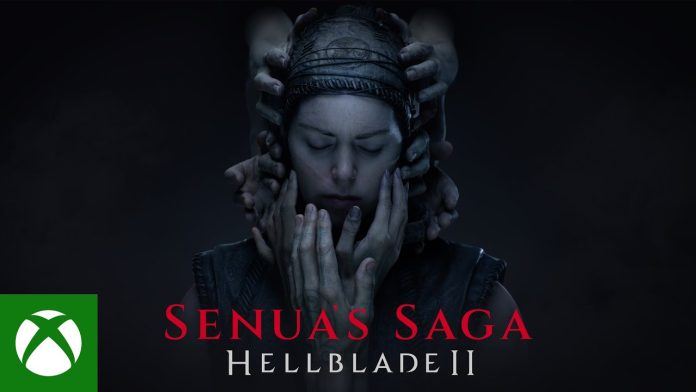Senua’s Saga: Hellblade II is the highly anticipated sequel to the critically acclaimed Hellblade: Senua’s Sacrifice. Developed by Ninja Theory, this game promises to deliver a deeper exploration of mental health themes while providing players with an immersive experience set in a visually stunning Norse mythology-inspired world. In this review, I will share my thoughts on the game’s graphics, gameplay, story, and overall impact.
Graphics and Art Design
One of the first things that struck me when I started playing Senua’s Saga: Hellblade II was the breathtaking graphics. The game employs cutting-edge technology, including advanced motion capture techniques, to create incredibly lifelike characters and environments. The attention to detail in facial expressions and the intricate design of the landscapes truly immerses you in the world.
The game is powered by Unreal Engine 5, which allows for impressive lighting effects and realistic textures. I found myself captivated by the shifting seasons and the dynamic weather systems that change the atmosphere throughout the gameplay. Each location feels distinct and rich with visual storytelling, enhancing the overall experience.
Gameplay Mechanics
The gameplay in Senua’s Saga: Hellblade II builds upon the mechanics introduced in its predecessor while introducing new elements that keep the experience fresh. The combat system is fluid and responsive, allowing for a variety of attack styles and strategies. I appreciated the emphasis on both offensive and defensive maneuvers, which encourages players to think tactically during encounters.
Puzzle-solving also plays a significant role in the gameplay. The puzzles are cleverly designed, requiring players to engage with the environment and think critically. I found the balance between combat and puzzles to be well-executed, ensuring that neither aspect felt neglected.
Story and Themes
The narrative in Senua’s Saga: Hellblade II is a continuation of Senua’s journey as she battles her inner demons and confronts the trauma of her past. The game delves into themes of mental illness, loss, and resilience, making it a poignant experience. I was deeply moved by the portrayal of Senua’s struggles, and the storytelling is further enhanced by the stunning voice acting and sound design.
As I progressed through the game, I felt a strong connection to Senua, and her journey became personal. The narrative unfolds in a way that encourages players to reflect on their own experiences and emotions, which is a testament to the game’s depth.
Sound Design and Music
Sound design is a crucial aspect of Senua’s Saga: Hellblade II. The game employs binaural audio technology to create an immersive soundscape that enhances the psychological horror elements. I often felt a sense of unease as whispers and sounds surrounded me, heightening the emotional impact of the gameplay.
The soundtrack, composed by the talented Gareth Coker, complements the visuals and narrative beautifully. The music ranges from haunting melodies to intense orchestral compositions, perfectly matching the game’s tone. I found that the sound design and music worked in harmony to create an unforgettable atmosphere.
Comparison to Hellblade: Senua’s Sacrifice
As a sequel, Senua’s Saga: Hellblade II has some big shoes to fill. Hellblade: Senua’s Sacrifice was groundbreaking in its approach to mental health and storytelling, and I was curious to see how the sequel would expand upon those themes. I am pleased to report that it not only meets expectations but often exceeds them.
The sequel offers a more expansive world, improved mechanics, and a deeper narrative. While the first game focused on Senua’s journey through her mind and struggles with psychosis, the sequel broadens the scope to include more of the external world and its influences on her psyche. This approach adds layers to the story and invites players to engage with the themes on a broader scale.
Challenges and Areas for Improvement
Despite its many strengths, Senua’s Saga: Hellblade II is not without its challenges. Some players may find the pacing to be uneven at times, with certain sections feeling drawn out. While I appreciated the emphasis on exploration and narrative, there were moments when the flow of gameplay could have been tighter.
Additionally, while the combat system is engaging, there were instances where the difficulty spiked unexpectedly. This could lead to frustration, especially for players who may not be as familiar with action-adventure games. A more gradual learning curve could benefit those new to the genre.
Conclusion
In conclusion, Senua’s Saga: Hellblade II is a remarkable sequel that builds upon the foundation laid by its predecessor. The stunning graphics, engaging gameplay, and powerful narrative combine to create an unforgettable experience. I found the exploration of mental health themes to be both poignant and thought-provoking, making the game not only entertaining but also meaningful.
As we continue to see advancements in technology and storytelling in the gaming industry, Senua’s Saga: Hellblade II stands out as a testament to the potential of video games as a medium for exploring complex emotional experiences. I highly recommend this game to anyone seeking a rich narrative and an immersive gaming experience.
<iframe width="560" height="315" src="https://www.youtube.com/embed/PRbOmIcVXak?si=VCTHOmkacMeDyCfz" title="YouTube video player" frameborder="0" allow="accelerometer; autoplay; clipboard-write; encrypted-media; gyroscope; picture-in-picture; web-share" referrerpolicy="strict-origin-when-cross-origin" allowfullscreen></iframe>




.jpg?w=100&resize=100,70&ssl=1)
/cdn.vox-cdn.com/uploads/chorus_asset/file/25719630/247350_CMBF_2024_EWinataBlackFriday_2040x1360.png?w=100&resize=100,70&ssl=1)